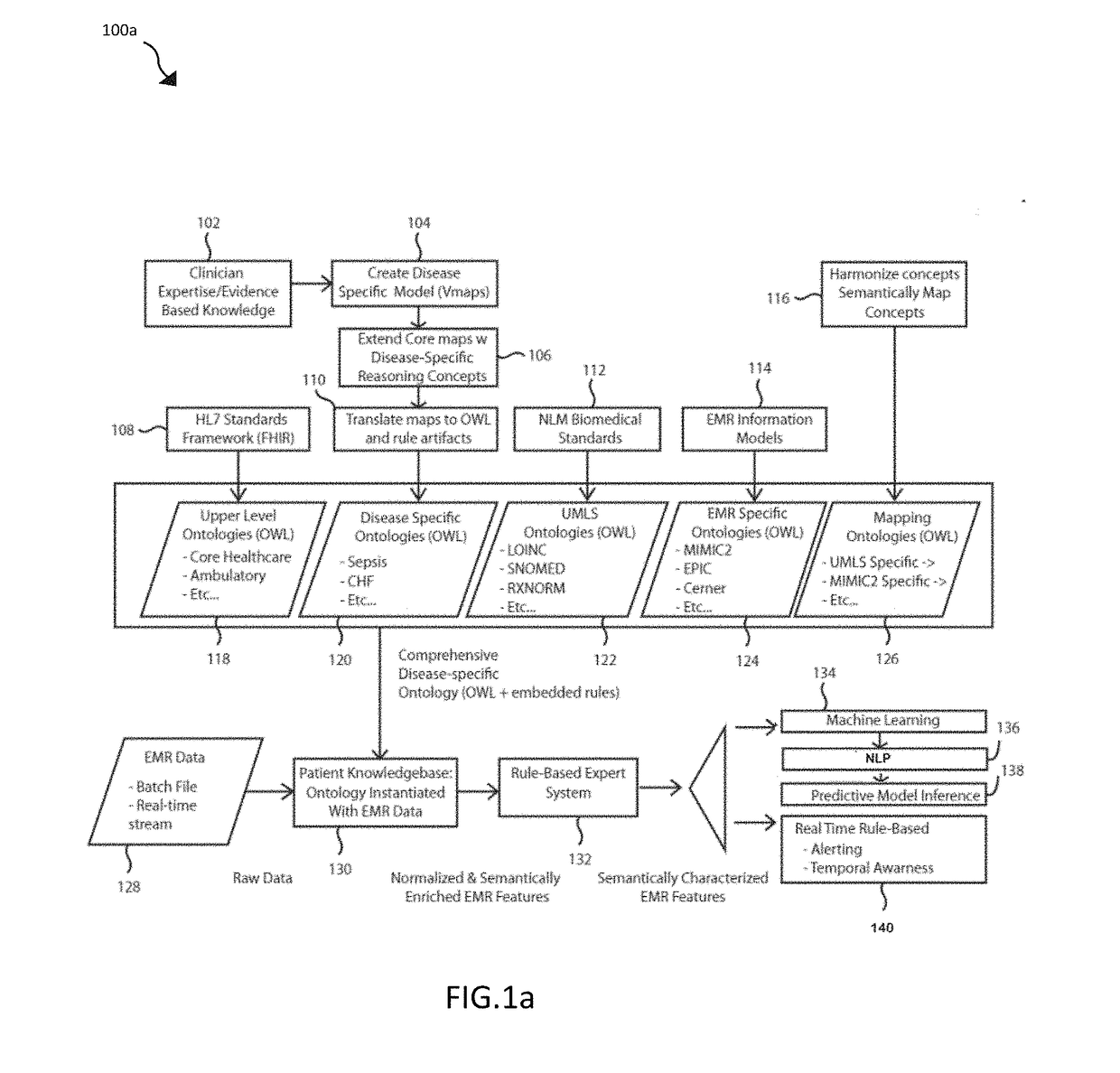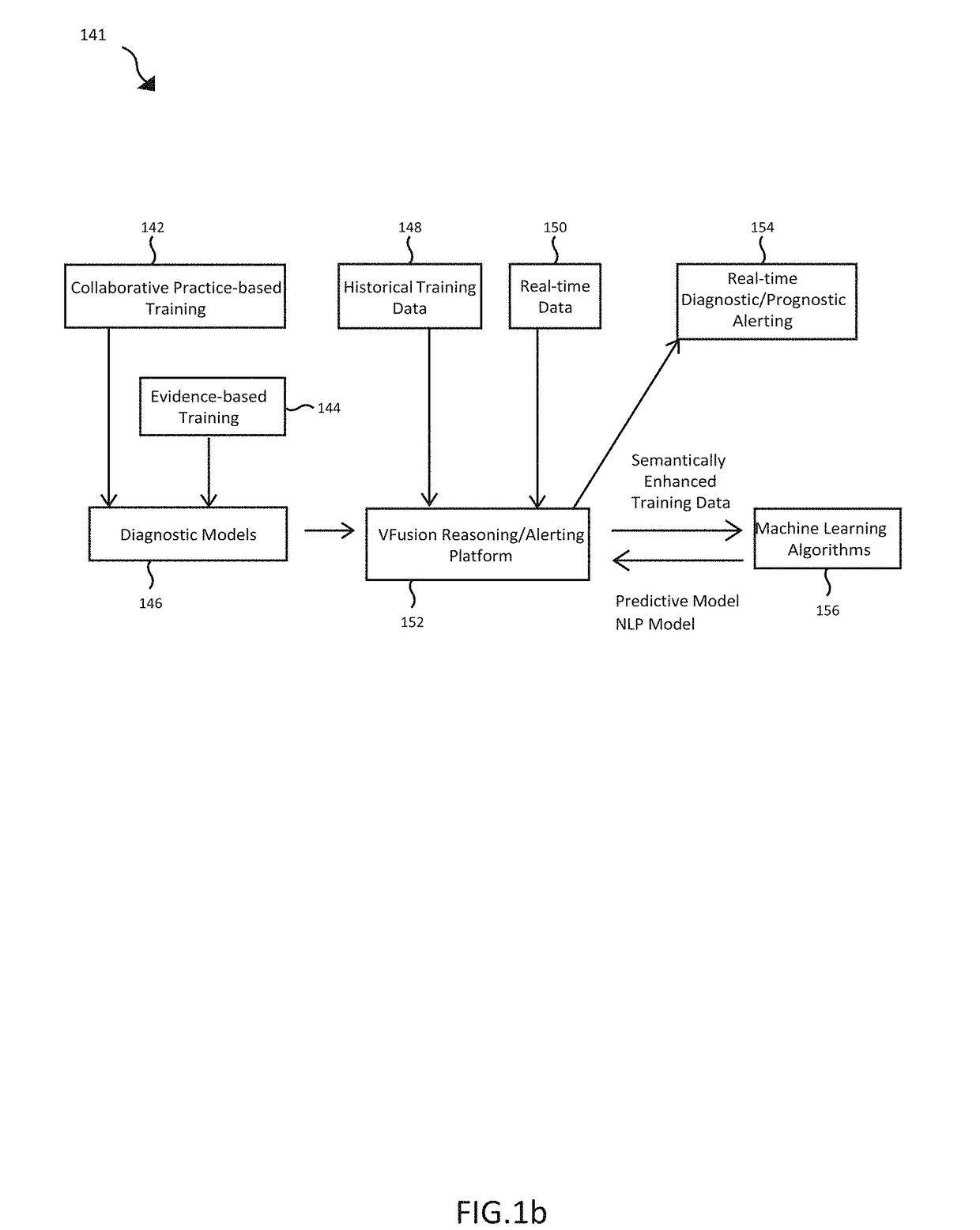Disease specific ontology-guided rule engine and machine learning for enhanced critical care decision support
a technology of disease specific ontology and rule engine, applied in knowledge representation, instruments, computing models, etc., can solve the problems of insufficient sensitiveness of augmented rule-based tools, inability to detect alerts from such tools, and current cds tools are limited to relatively rudimentary rule logic over observed data, so as to improve the actionable performance of automated cds and enhance early recognition and treatment
- Summary
- Abstract
- Description
- Claims
- Application Information
AI Technical Summary
Benefits of technology
Problems solved by technology
Method used
Image
Examples
Embodiment Construction
[0026]While the foregoing written description of the invention enables one of ordinary skill to make and use what is considered presently to be the best mode thereof, those of ordinary skill will understand and appreciate the existence of variations, combinations, and equivalents of the specific embodiment, method, and examples herein. The invention should therefore not be limited by the above described embodiment, method, and examples, but by all embodiments and methods within the scope and spirit of the invention.
[0027]The preferred embodiment of the present disclosure includes functional processes and systems for creation and use of customized disease specific ontologies in clinical decision support. In the domain of healthcare and biomedical informatics, several different general purpose ontological repositories have been developed including the Unified Medical Language System (UMLS), a set of files and software that brings together many health and biomedical vocabularies and st...
PUM
 Login to View More
Login to View More Abstract
Description
Claims
Application Information
 Login to View More
Login to View More - R&D
- Intellectual Property
- Life Sciences
- Materials
- Tech Scout
- Unparalleled Data Quality
- Higher Quality Content
- 60% Fewer Hallucinations
Browse by: Latest US Patents, China's latest patents, Technical Efficacy Thesaurus, Application Domain, Technology Topic, Popular Technical Reports.
© 2025 PatSnap. All rights reserved.Legal|Privacy policy|Modern Slavery Act Transparency Statement|Sitemap|About US| Contact US: help@patsnap.com



